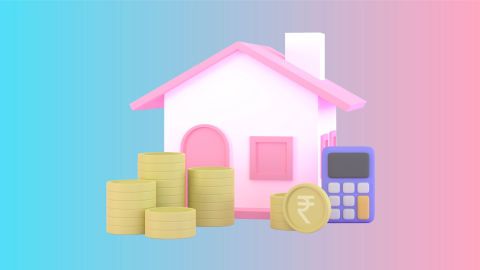The new tax regime offers a simplified tax structure with reduced rates but limited deductions and exemptions. Understanding the new tax regime income tax slabs and associated benefits can help taxpayers make informed decisions about their tax liabilities and investments. This article delves into the specifics of the new tax regime, highlighting the tax slabs and benefits, and discussing relevant investment options that can optimise tax planning.
Introduction to the new tax regime
The new tax regime income tax slabs were introduced in Union Budget 2025 to simplify the tax system, making it more transparent and easier for taxpayers to comply with. It offers lower tax rates but limits the scope for exemptions and deductions, which can significantly affect tax planning strategies.
Key differences from the old tax regime
- Lower tax rates: The new tax regime features reduced tax rates across various income brackets, mostly zero tax liability for individuals earning up to ₹12,00,000.
- Limited deductions: Unlike the old tax regime, the new regime does not allow many of the common deductions and exemptions, such as those under Sections 80C, 80D, and 24(b).
Income tax slabs under the new tax regime for 2025
The income tax slabs under the new tax regime for 2024 are as follows:
| Income Range (Rs) | Tax Rate |
Up to ₹4,00,000 |
Nil |
₹4,00,001 - ₹8,00,000 |
5% |
₹8,00,001 - ₹12,00,000 |
10% |
₹12,00,001 - ₹16,00,000 |
15% |
₹16,00,001 - ₹20,00,000 |
20% |
₹20,00,001 - ₹24,00,000 |
25% |
Above ₹24,00,000 |
30% |
Comparison Between New Income Tax Regime and Old Tax Regime
Net Annual Income |
Old tax regime | New tax regime |
Up to Rs. 2.5 lakh |
Nil |
Nil |
Rs. 2.5 lakh – Rs. 4 lakh |
5% |
Nil |
Rs. 4 lakh – Rs. 5 lakh |
5% |
5% |
Rs. 5 lakh – Rs. 8 lakh |
20% |
5% |
Rs. 8 lakh – Rs. 10 lakh |
20% |
10% |
Rs. 10 lakh – Rs. 12 lakh |
30% |
10% |
Rs. 12 lakh – Rs. 16 lakh |
30% |
15% |
Rs. 16 lakh - Rs. 20 lakh |
30% |
20% |
Rs. 20 lakh - Rs. 24 lakh |
30% |
25% |
More than Rs. 24 lakh |
30% |
30% |
Benefits of the new tax regime
- Simplification of tax calculation: The new tax regime simplifies tax calculation by reducing the need for extensive documentation and claim processing for various exemptions and deductions. This straightforward approach makes it easier for taxpayers to understand their tax liabilities.
- Lower tax rates: The reduced tax rates in the new regime can benefit taxpayers who do not have significant deductions to claim. This is particularly advantageous for those with lower or mid-range incomes who may not have the financial capacity to invest in various tax-saving instruments.
- Flexibility in financial planning: Without the compulsion to invest in specific tax-saving instruments, taxpayers have more flexibility in their financial planning. They can choose investments based on their financial goals rather than primarily for tax benefits.
Maximising tax savings
While the new tax regime limits traditional tax-saving options, several financial products remain beneficial for overall financial health and wealth creation.
1. Health Insurance: Essential for Financial Protection
Tax Benefit (Old Regime): Section 80D allows deductions on health insurance premiums.
New Regime: No tax deductions, but buying health insurance remains crucial to cover medical expenses and reduce out-of-pocket healthcare costs.
2. National Pension System (NPS): Securing Retirement
Tax Benefit (Old Regime): Contributions to NPS qualify for deductions under Section 80CCD(1B) (up to ₹50,000).
New Regime: No direct tax benefit, but NPS remains a strong retirement planning tool, offering long-term wealth creation and pension security.
3. Mutual Funds: Long-Term Wealth Creation
Tax Benefit (Old Regime): Equity-Linked Savings Scheme (ELSS) offers deductions under Section 80C.
New Regime: ELSS tax benefits are removed, but investing in SIPs and diversified mutual funds can still help build wealth through compounding and market-linked returns.
Optimizing Tax Liability Under the New Regime
The new tax slabs provide lower rates, reducing tax outgo for those who do not claim exemptions:
Income Slab (₹) |
New Tax Rate (FY 2024-25) |
Up to ₹3,00,000 |
Nil |
₹3,00,001 - ₹6,00,000 |
5% |
₹6,00,001 - ₹9,00,000 |
10% |
₹9,00,001 - ₹12,00,000 |
15% |
₹12,00,001 - ₹15,00,000 |
20% |
Above ₹15,00,000 |
30% |
Bajaj Housing Finance Home Loan
When considering a home loan, Bajaj Housing Finance offers competitive interest rates and flexible repayment options. Whether you are a first-time homebuyer or looking to refinance, our home loan comes with various benefits, including:
- Easy documentation: Streamlined process with minimal paperwork.
- Attractive interest rates: Competitive home loan interest rates that make your loan affordable.
- Long repayment tenure: Options to choose a tenure that suits your repayment capacity.
The new tax regime offers a simplified approach to income tax calculation with reduced rates but limited deductions and exemptions. Understanding the new tax regime's income tax slabs and benefits can help taxpayers make informed decisions. While traditional tax-saving instruments may not provide the same benefits under the new regime, investing in health insurance, mutual funds, and home loans, such as those offered by Bajaj Housing Finance, remains crucial for financial stability and growth. Making an informed choice between the old and new tax regimes can optimise tax liabilities and align with one's financial goals.




